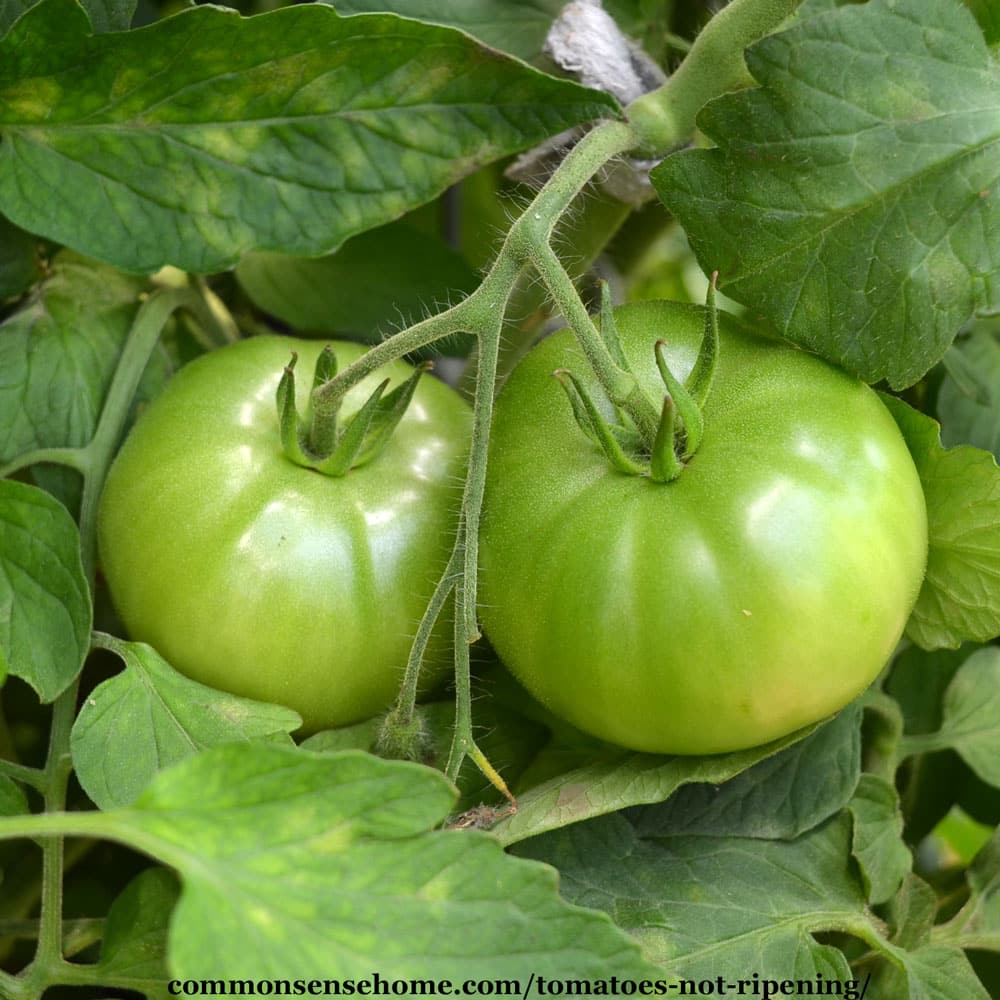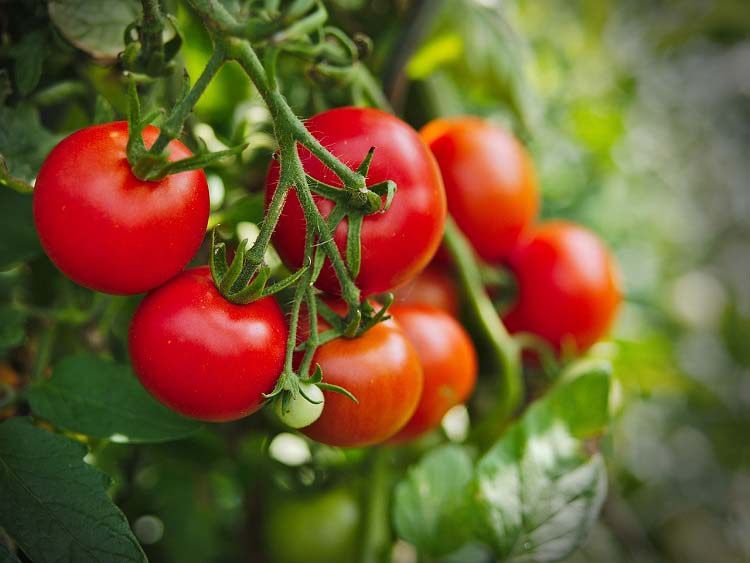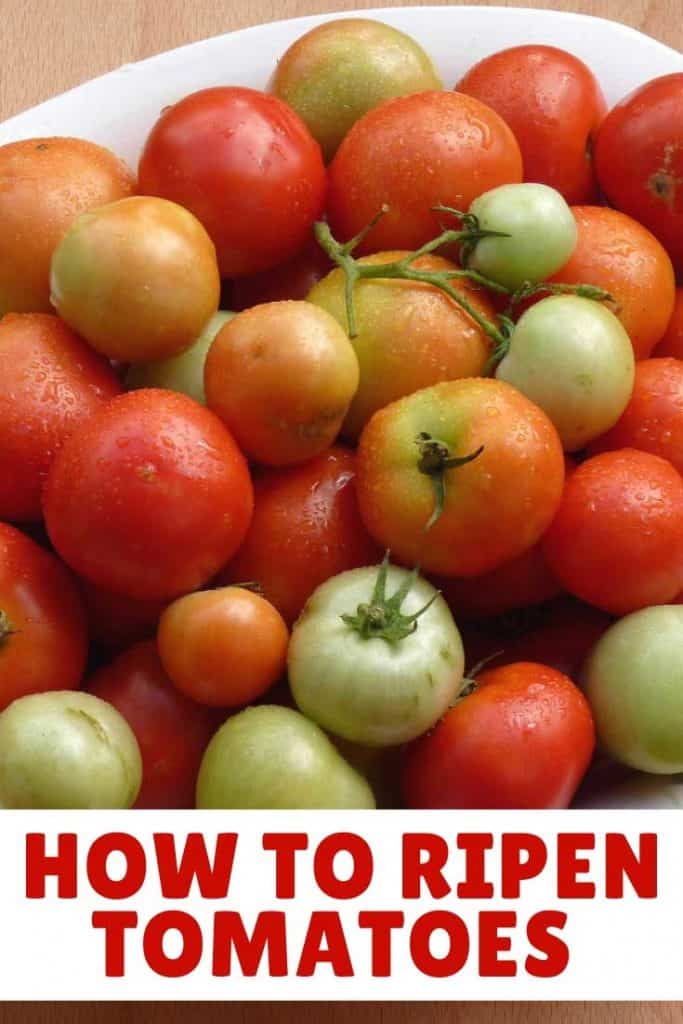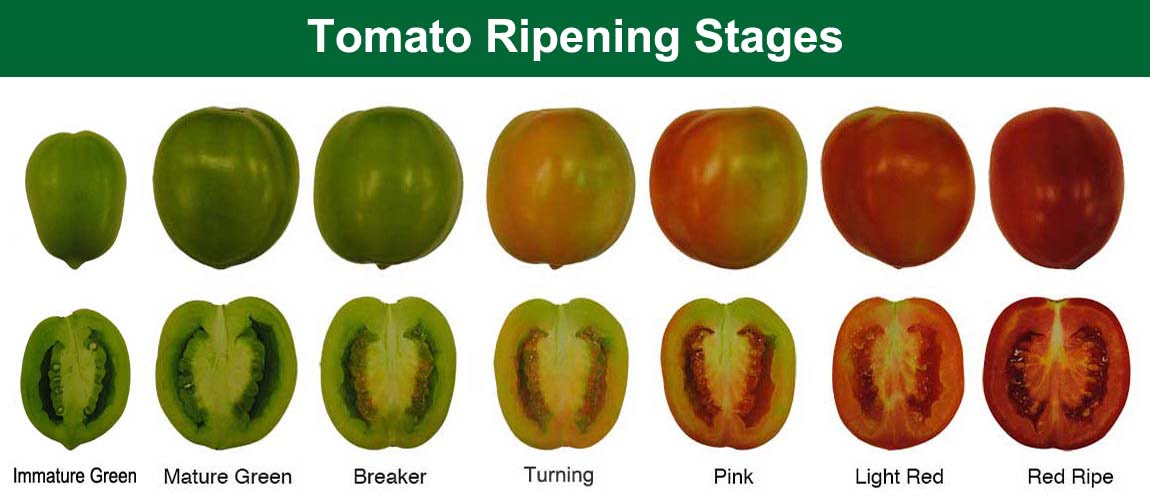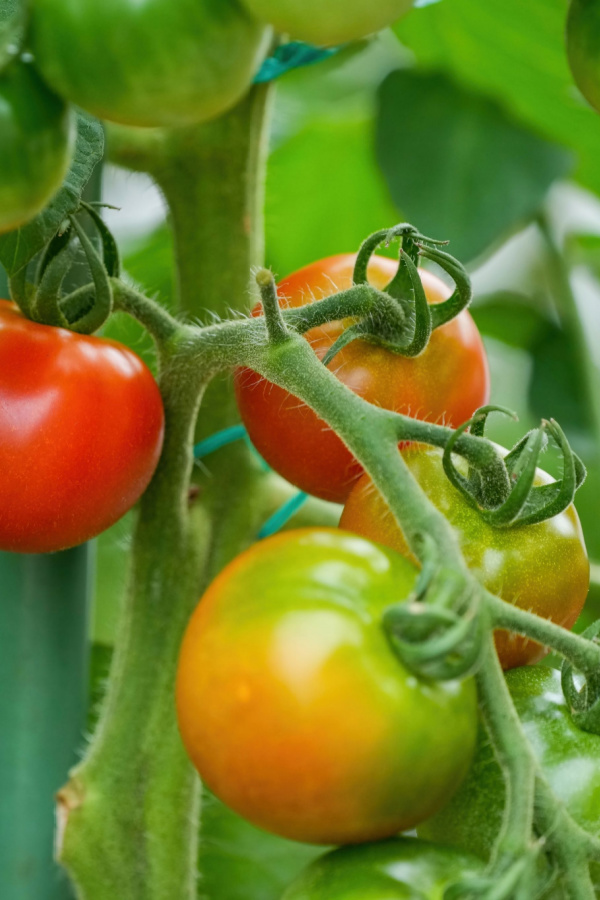Why Tomatoes Don’t Always Ripen as Expected
Tomatoes are one of the most widely consumed fruits worldwide, and their ripening process can be a bit tricky. Despite being picked at the optimal time, tomatoes may not always ripen as expected, leaving gardeners and consumers alike wondering what went wrong. The reasons for this can be attributed to various factors, including temperature, humidity, and handling.
Temperature plays a significant role in the ripening process of tomatoes. Tomatoes typically require a consistent temperature between 65°F and 70°F (18°C and 21°C) to ripen properly. If the temperature is too high or too low, it can slow down or even stop the ripening process. For instance, if tomatoes are exposed to temperatures above 85°F (29°C), the ripening process can be accelerated, but the flavor and texture may be compromised.
Humidity is another crucial factor that affects the ripening of tomatoes. Tomatoes need a relatively high humidity environment, typically above 50%, to ripen properly. If the humidity is too low, the tomatoes may not ripen evenly, leading to an unappealing appearance and flavor.
Handling is also a critical factor in the ripening process of tomatoes. Tomatoes that are handled roughly or dropped during transportation may not ripen properly, as the physical stress can trigger the production of ethylene, a hormone that promotes ripening. However, excessive handling can also lead to over-ripening, which can result in a loss of flavor and texture.
Understanding these factors can help in finding a quick way to ripen tomatoes. By controlling the temperature, humidity, and handling of tomatoes, gardeners and consumers can encourage the ripening process and enjoy perfectly ripe tomatoes. This knowledge can be used to develop a quick and effective method for ripening tomatoes, which will be discussed in the next section.
The Science Behind Tomato Ripening
Tomato ripening is a complex process that involves a series of biochemical reactions. At the heart of this process is the production of ethylene, a hormone that promotes ripening. Ethylene is produced naturally by tomatoes as they ripen, and it plays a crucial role in the breakdown of chlorophyll and the softening of cell walls.
Chlorophyll breakdown is an essential step in the ripening process. As tomatoes ripen, the chlorophyll content decreases, allowing the yellow and red pigments to become visible. This process is triggered by the production of ethylene, which stimulates the breakdown of chlorophyll and the synthesis of new pigments.
Cell wall softening is another critical aspect of tomato ripening. As tomatoes ripen, the cell walls break down, becoming softer and more fragile. This process is also triggered by ethylene, which stimulates the production of enzymes that break down the cell walls.
Understanding the science behind tomato ripening can help in finding a quick way to ripen tomatoes. By manipulating the production of ethylene and the breakdown of chlorophyll and cell walls, it is possible to speed up the ripening process. This knowledge can be used to develop a quick and effective method for ripening tomatoes, such as using ethylene-producing fruits or controlling the temperature and humidity.
For example, placing tomatoes in a paper bag with an ethylene-producing fruit such as an apple can help to speed up the ripening process. The ethylene produced by the apple will stimulate the production of ethylene in the tomatoes, promoting ripening. Similarly, controlling the temperature and humidity can also help to speed up the ripening process.
By understanding the science behind tomato ripening, it is possible to develop innovative and creative methods for ripening tomatoes quickly. This knowledge can be used to improve the quality and flavor of tomatoes, making them more enjoyable to eat.
How to Ripen Tomatoes Quickly at Home
Ripening tomatoes at home can be a simple and effective way to enjoy perfectly ripe tomatoes. Here are a few methods to try:
**Paper Bag Ripening**: Place the tomatoes in a paper bag with an ethylene-producing fruit such as an apple or banana. Seal the bag and keep it in a warm, dark place. The ethylene produced by the fruit will help to ripen the tomatoes.
**Sunlight Exposure**: Place the tomatoes in a sunny spot, such as a windowsill or a sunny countertop. The UV rays from the sun will help to ripen the tomatoes.
**Ethylene-Producing Fruits**: Place the tomatoes near other fruits that produce ethylene, such as apples or bananas. The ethylene produced by these fruits will help to ripen the tomatoes.
**Monitoring and Maintenance**: Check the tomatoes regularly to ensure they are ripening evenly. If the tomatoes are not ripening quickly enough, try moving them to a warmer location or increasing the humidity around them.
**Tips and Tricks**: To speed up the ripening process, try using a combination of these methods. For example, place the tomatoes in a paper bag with an ethylene-producing fruit and keep it in a sunny spot. This will help to ripen the tomatoes quickly and evenly.
By following these simple methods, you can enjoy perfectly ripe tomatoes at home. Remember to monitor and maintain optimal conditions for ripening, and don’t be afraid to experiment with different methods to find what works best for you.
The Role of Ethylene in Tomato Ripening
Ethylene is a hormone that plays a crucial role in the ripening process of tomatoes. It is produced naturally by tomatoes as they ripen, and it can also be produced by other fruits, such as apples and bananas. Ethylene helps to break down the cell walls of the tomato, making it softer and more flavorful.
Using ethylene-producing fruits is a quick way to ripen tomatoes. Simply place the tomatoes near the ethylene-producing fruit, and the ethylene will help to ripen the tomatoes. This method is especially effective when used in combination with other methods, such as paper bag ripening or sunlight exposure.
Apples and bananas are two of the most effective ethylene-producing fruits for ripening tomatoes. They produce a high amount of ethylene, which can help to ripen the tomatoes quickly. Other fruits, such as pears and grapes, can also be used, but they may not be as effective.
When using ethylene-producing fruits to ripen tomatoes, it’s essential to monitor the tomatoes regularly to ensure they are ripening evenly. If the tomatoes are not ripening quickly enough, try moving them to a warmer location or increasing the humidity around them.
It’s also important to note that ethylene production can be affected by factors such as temperature, humidity, and light. For example, high temperatures can increase ethylene production, while low temperatures can slow it down. By understanding how these factors affect ethylene production, you can optimize the ripening process and achieve perfectly ripe tomatoes.
By using ethylene-producing fruits, you can enjoy a quick way to ripen tomatoes and achieve delicious and flavorful results. Remember to monitor the tomatoes regularly and adjust the ripening conditions as needed to ensure optimal results.
Using Heat to Ripen Tomatoes
Heat is another factor that can be used to ripen tomatoes quickly. By exposing tomatoes to a controlled amount of heat, you can stimulate the ripening process and achieve perfectly ripe tomatoes. However, it’s essential to use heat carefully, as excessive heat can damage the tomatoes and affect their flavor and texture.
The optimal temperature range for ripening tomatoes using heat is between 65°F and 75°F (18°C and 24°C). At this temperature range, the tomatoes will ripen slowly and evenly, without becoming overripe or damaged. You can use a thermometer to monitor the temperature and ensure that it remains within the optimal range.
The duration of heat exposure also plays a crucial role in ripening tomatoes. Generally, tomatoes should be exposed to heat for 24 to 48 hours to achieve optimal ripening. However, the exact duration may vary depending on the variety of tomato and the level of ripeness desired.
There are several ways to use heat to ripen tomatoes, including placing them in a warm water bath, using a heating pad, or exposing them to direct sunlight. However, it’s essential to monitor the temperature and duration of heat exposure to avoid damaging the tomatoes.
Using heat to ripen tomatoes has several benefits, including faster ripening times and improved flavor and texture. However, it also has some drawbacks, such as the risk of overripe or damaged tomatoes. By using heat carefully and monitoring the temperature and duration of exposure, you can achieve perfectly ripe tomatoes using this method.
It’s also worth noting that using heat to ripen tomatoes can be combined with other methods, such as paper bag ripening or ethylene-producing fruits, to achieve even faster ripening times. By combining these methods, you can create a quick way to ripen tomatoes that produces delicious and flavorful results.
Common Mistakes to Avoid When Ripening Tomatoes
When ripening tomatoes, it’s essential to avoid common mistakes that can affect the quality and flavor of the fruit. Here are some mistakes to avoid and tips on how to achieve perfectly ripe tomatoes:
**Over-handling**: Tomatoes are delicate and can be damaged easily. Avoid handling them excessively, as this can cause bruising and affect the ripening process. Instead, handle them gently and minimize the number of times you touch them.
**Under-ripening**: Tomatoes that are not ripe enough can be a disappointment. To avoid under-ripening, check the tomatoes regularly and use a combination of methods to ripen them, such as paper bag ripening and sunlight exposure.
**Extreme temperatures**: Tomatoes are sensitive to extreme temperatures and can be damaged if exposed to temperatures that are too high or too low. Avoid placing tomatoes near heating vents, radiators, or air conditioning units, and keep them away from direct sunlight during the hottest part of the day.
**Inadequate humidity**: Tomatoes need a certain level of humidity to ripen properly. If the air is too dry, the tomatoes may not ripen evenly or may develop brown spots. To maintain optimal humidity, place the tomatoes in a paper bag or cover them with a cloth.
**Poor storage**: Tomatoes that are not stored properly can spoil quickly. To maintain the freshness and flavor of ripe tomatoes, store them in a cool, dry place, away from direct sunlight and heat sources.
By avoiding these common mistakes, you can achieve perfectly ripe tomatoes that are delicious and flavorful. Remember to handle them gently, check them regularly, and maintain optimal conditions for ripening.
How to Store Ripe Tomatoes for Longer
Once you’ve successfully ripened your tomatoes, it’s essential to store them properly to maintain their freshness and flavor. Here are some tips on how to store ripe tomatoes for longer:
**Temperature**: Store ripe tomatoes at room temperature, away from direct sunlight and heat sources. Avoid storing them in the refrigerator, as the cold temperature can affect their flavor and texture.
**Humidity**: Store ripe tomatoes in a humid environment, such as a paper bag or a container with a lid. This will help to maintain the moisture level and prevent the tomatoes from drying out.
**Handling**: Handle ripe tomatoes gently to avoid bruising or damaging them. Avoid touching the tomatoes excessively, as the oils from your skin can affect their flavor and texture.
**Storage containers**: Store ripe tomatoes in a container that allows for airflow, such as a paper bag or a mesh bag. Avoid storing them in airtight containers, as this can cause the tomatoes to become soggy and develop off-flavors.
**Shelf life**: Ripe tomatoes can be stored for several days to a week, depending on the variety and storage conditions. Check the tomatoes regularly for signs of spoilage, such as mold or soft spots.
By following these tips, you can enjoy your ripe tomatoes for a longer period and maintain their freshness and flavor. Remember to store them properly and handle them gently to ensure they remain delicious and flavorful.
Conclusion: Enjoy Your Perfectly Ripe Tomatoes
With the methods and tips provided in this article, you can now enjoy perfectly ripe tomatoes at home. Remember to be patient and handle the tomatoes gently to ensure they remain delicious and flavorful.
By understanding the factors that affect tomato ripening, such as temperature, humidity, and handling, you can develop a quick way to ripen tomatoes that works for you. Whether you use paper bag ripening, sunlight exposure, or ethylene-producing fruits, the key is to find a method that works for you and your tomatoes.
Don’t be discouraged if your tomatoes don’t ripen as expected at first. With practice and patience, you’ll be able to achieve perfectly ripe tomatoes every time. And remember, the most important thing is to enjoy the process and the delicious results!
So go ahead, give these methods a try, and enjoy your perfectly ripe tomatoes. Happy ripening!


